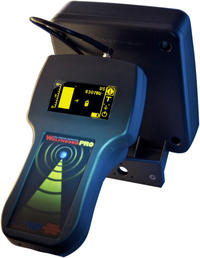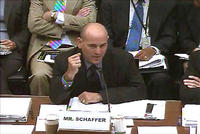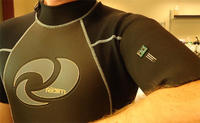-
Anthrax vaccine program demonstrates 36 month product stability
Maryland-based PharmAthene has achieved an important program milestone in its recombinant protective antigen (rPA) anthrax vaccine program, and demonstrated thirty-six month stability of its rPA drug product candidate; the data suggest that the rPA product candidate is both highly stable and potent; stability has historically been a stumbling block for other recombinant anthrax vaccine programs
-
-
The economic costs of natural disasters
It appears that the verdict is still on out on the economic effects of natural disasters with researchers reaching diverging conclusions on the matter; New Zealand’s economy has actually grown 0.8 percent in the first quarter of this year, despite the 6.3 magnitude earthquake that rocked Christchurch, New Zealand in February; New Zealand may have escaped with little economic repercussions, but studies show that this is not always the case with natural disasters
-
-
Private contractors outnumber government security two to one

A recent survey found that the number of private security contractors outnumber police officers two to one around the world; in some countries, the difference between private security contractors and law enforcement officials is even more significant; the report also noted several critical emerging issues as a result of the increasing use of private contractors including oversight, the role of government, and concerns for public safety
-
-
Biometrics for Indian cabs
Officials at India’s New Delhi International Airport will soon begin using biometrics to monitor taxi drivers; the move comes after a Saudi businessman was abducted and murdered by two cab drivers in 2008
-
-
L-1 Identity, Safran merger given green light
The Committee on Foreign Investment in the United States (CFIUS) recently gave the go ahead to French defense firm Safran SA to close its bid for L-1 Identity for $1.6 billion
-
-
BVS combats jail cell phone smuggling

Prisons across the United States are struggling to prevent cell phones from falling into inmates’ hands; in 2010 more than 10,000 contraband cell phones were confiscated from inmates in California prisons; to help officials crack down on these contraband items, Berkeley Varitronics Systems has developed a suite of sophisticated cell phone detectors that can “sniff” out phones even when they are hidden in the most obscure places
-
-
Immigration and the Aussie resources boom
Australian businesses claim that unless overseas migration into Australia is kept at 180,000 people a year or higher, there will not be enough skilled workers to meet employer requirements and to sustain the country’s aggregate economic growth; a new study challenges many of the assumptions reinforcing the arguments for continued high levels of immigration, and shows that Australia’s economic growth can be maintained with overseas migration at 90,000 people a year
-
-
PositiveID releases groundbreaking new biothreat detector
PositiveID Corporation recently unveiled its new Multiplex BioThreat Assay, which the company says is the first of its kind; according to PostiveID, its latest device is the first commercially available detector that can diagnose up to six bio-threat organisms in the Centers for Disease Control’s category A and B lists in a far shorter time than existing methods
-
-
The art of signature replication
A Rockville, Maryland company’s signature replication technology is so advanced, DHS sends its agents there to learn; using sophisticated computer software and its Autopen signing machines, Damilic is capable of replicating signatures that so closely resemble the original hand written version, forensic scientists are needed to be able to tell the difference
-
-
Recent deluge of cyber attacks results in record spending
The deluge of high profile cyber attacks on major corporations and government entities like the U.S. Senate, the CIA, and Sony has driven a sharp increase in demand for cyber security experts; in the first six months of this year alone, cyber attacks and data breaches have cost U.S. companies approximately $96 billion, nearly the total for 2010; analysts project 2011 to be the busiest year yet with an estimated $75.6 billion in cyber security spending, surpassing last year’s record $63 billion
-
-
New tools identify a person's expression, estimate their mood

Biometrics company releases software that allows users to “cartoonize” photos; cartoons aside, the company announced the release of more free API (application programming interface) face detection tools: the service can identify a person’s expression as well as estimate their mood
-
-
Combating counterfeit microchips // by Dr. James Hayward, Ph.D, Sc.D.
Dr. James Hayward, the chairman, president, and CEO of Applied DNA Sciences, argues that the U.S. government needs to do more to prevent corrupted microchips from entering U.S. computers that make it easier for hackers and foreign governments to infiltrate networks
-
-
Malware imported into U.S. on foreign-made components

A high level DHS official acknowledged that malware built into imported electronic components sold in the United States poses a serious threat to U.S. economy and security; he also said it was a complex threat which the federal government has been trying to address in different ways; Greg Schaffer, acting deputy undersecretary for the National Protection and Programs Directorate at DHS, said the threat is “one of the most complicated and difficult challenges we have”
-
-
ASIS Conference: Securing the global supply chain
At the upcoming annual ASIS International security conference, attendees will have the opportunity to learn more about protecting the global supply chain at one of the many educational sessions; officials fear that a terrorist attack on a seaport could cripple a local economy and have global repercussions. As nearly 90 percent of the world’s goods are still shipped via containers on massive transport ships
-
-
Sensors printed on wetsuits detect explosives, other hazards

UC Sand Diego researcher has successfully printed thick-film electrochemical sensors directly on flexible wetsuit material, paving the way for nano devices to detect underwater explosives or ocean contamination; UCSD has a full U.S. patent pending on the technology, and has begun talks on licensing the system to a Fortune 500 company
-
More headlines
The long view
Ransomware Attacks: Death Threats, Endangered Patients and Millions of Dollars in Damages
A ransomware attack on Change Healthcare, a company that processes 15 billion health care transactions annually and deals with 1 in 3 patient records in the United States, is continuing to cause massive disruptions nearly three weeks later. The incident, which started on February 21, has been called the “most significant cyberattack on the U.S. health care system” by the American Hospital Association. It is just the latest example of an increasing trend.
Chinese Government Hackers Targeted Critics of China, U.S. Businesses and Politicians
An indictment was unsealed Monday charging seven nationals of the People’s Republic of China (PRC) with conspiracy to commit computer intrusions and conspiracy to commit wire fraud for their involvement in a PRC-based hacking group that spent approximately 14 years targeting U.S. and foreign critics, businesses, and political officials in furtherance of the PRC’s economic espionage and foreign intelligence objectives.
European Arms Imports Nearly Double, U.S. and French Exports Rise, and Russian Exports Fall Sharply
States in Europe almost doubled their imports of major arms (+94 per cent) between 2014–18 and 2019–23. The United States increased its arms exports by 17 per cent between 2014–18 and 2019–23, while Russia’s arms exports halved. Russia was for the first time the third largest arms exporter, falling just behind France.
LNG Exports Have Had No Impact on Domestic Energy Costs: Analysis
U.S. liquified natural gas (LNG) exports have not had any sustained and significant direct impact on U.S. natural gas prices and have, in fact, spurred production and productivity gains, which contribute to downward pressure on domestic prices.
